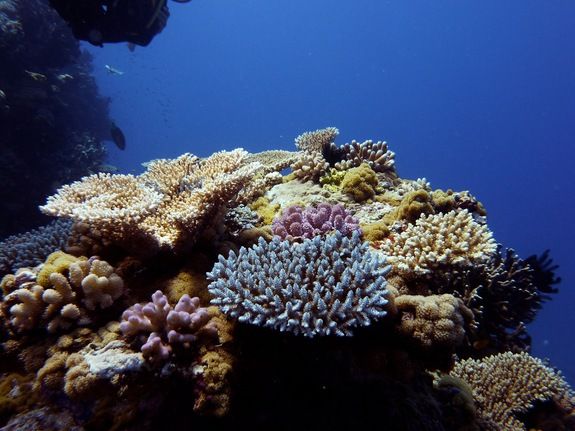Weird Ocean Current May Create Coral Refuges

Global warming is expected to have devastating effects on coral reefs, but recent research points to a few exceptions.
Warming in the equatorial Pacific may actually create refuges for corals around a handful of islands, even as it bleaches, or kills, corals elsewhere, suggests new research that predicts increased upwelling of cold, nutrient-rich water in these places.
"These little islands in the middle of the ocean can counteract global trends and have a big impact on their own future, which I think is a beautiful concept," said study researcher Kristopher Karnauskas, a Woods Hole Oceanographic Institution scientist, in a press release issued by the institution.
If predictions made by Karnauskas and colleague Anne Cohen are accurate, warming around the Gilbert Islands will be slower than elsewhere, giving the corals and their symbiotic algae a better chance to adapt. Perhaps these refuges could eventually become a source of new corals and other species that could recolonize reefs damaged by warming, Karnauskas said.
Corals are animals that host tiny plants, or algae, that feed them using photosynthesis. The reefs corals build provide important habitat for many species. Warming water can cause corals to expel their algae, a phenomenon called bleaching, which turns the corals white and puts them under great stress and at risk of death.
Global climate models predict the central tropical Pacific will warm by about 5.0 degrees Fahrenheit (2.8 degrees Celsius) by the end of the century. To get a better idea of how conditions might play out on a small geographic scale, the researchers used the global models in combination with a fine-scale regional model.
The low-lying coral atoll islands, part of the nation of Kiribati, are as small as 1.54 square miles (4 square kilometers).
Sign up for the Live Science daily newsletter now
Get the world’s most fascinating discoveries delivered straight to your inbox.
As a result of other changes caused by warming, their work predicts the deep equatorial undercurrent (EUC), an eastward flowing current at the equator, will strengthen by 14 percent; this strengthening would create habitat for corals to flourish alongside the islands by bringing cooler water and nutrients to the surface. Though the EUC is an east-to-west current, when it hits an island, water gets deflected upward.
"Our model suggests that the amount of upwelling will actually increase by about 50 percent around these islands and reduce the rate of warming waters around them by about 1.25 degrees F (0.7 degrees C) per century," Karnauskas said.
The research appears in the April 30 issue of the journal Nature Climate Change.
You can follow LiveScience senior writer Wynne Parry on Twitter @Wynne_Parry. Follow LiveScience for the latest in science news and discoveries on Twitter @livescience and on Facebook.












